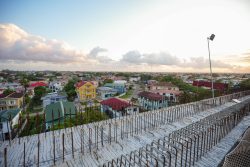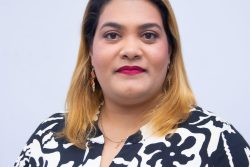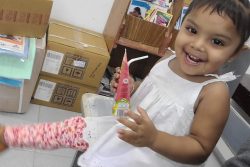Dear Editor,
News of this medical centre on the East Coast Demerara at once attracted my attention. The newspaper report said that it was reducing charges for dialysis treatment. This was counter to all the dreary news from Guyana. Naturally it attracted my attention and I wrote a few lines about it in the press. The worthy pioneer of the project read my remarks and let me know that I was welcome to visit. A visit seemed to me like a pipe dream. We had gone home to Guyana in December, 2011, at the time of my younger brother’s passing and only with the help of kind, understanding friends who know my financial standing. We had stayed in Buxton-Friendship. Dr Doobay had recalled what is lost to the wider history but what to small communities was important. His father, the eminent Pandit Ramsahai Doobay, and I, a rural high school principal, separately accepted an invitation from the British Colonial Secretary, Mr Duncan Sandys during his fact-finding visit to Guyana in early July, 1963. It was an invitation to meet at short notice on the big bridge between Buxton and Annandale and shake hands in the presence of large crowds from both villages, in order to help diffuse tension in the tail of the 80-day strike of government workers. At the time, July 1963, I was in the bad books of both the PPP and the PNC and belonged to no organisation. Sandys had done a walk-through of both communities earlier the same day, That was half a century ago.
It was the Walter Rodney Inquiry that decided my 2014 visit to Guyana after coming for Mama Freda’s funeral in 2004 and my brother’s in December, 2011. At the end of the last day of my testimony, a new friend, Dr Melissa Ifiill helped me to get to Annandale in search of this oasis in a desert. Andaiye had asked her to make sure I got to the Inquiry in time day after day. This was one of her added missions. Mr Troy Kellman offered to drive.
The woman professional in charge had never heard of us and did not expect us but received us warmly. She was a young African Guyanese, from the city. It was late in the day and I expected to be courteously rushed, but she gave us all the time we needed. I was not the only curious one. I had not known that patients on dialysis could carry on a conversation, laugh, read, watch TV and occupy their time while lying on their backs to suit the equipment. We do not grow old without knowing people in various places. I knew no one personally, but was able to send a few messages to others. The twenty units were all occupied and on that shift the patients were all in a pleasant mood. Dr Ifill got into a few conversations and said that financial arrangements seemed helpful to the average citizen. A young African man was going off his shift, or out of the door, as we entered. He smiled.
A post on the internet credited to the surgical department of Stony Brook University Hospital has this version of the introduction of dialysis to Guyana:
“In 2008, we initiated the first Guyanese comprehensive kidney replacement program, comprising hemodialysis (HD), peritoneal dialysis (PD), vascular access procedures, and living-donor kidney transplantation. The government of Guyana, US-based philanthropists, US-based physicians, and Guyanese caregivers teamed up to form a public-private partnership. This pilot program was free of cost to the patients.”
That was the “pilot” programme. This is one pilot phase that fulfilled the vision. It seems to be here to stay. It is no longer free of cost to the patients, but compared to others is low cost and less stressful, This means that patients who cannot afford high cost dialysis may now have a more affordable option. It is a benefit for some of the excluded. The facility stands on land donated by the Doobay family who gave substantial support to the non-profit entity owning the centre.
On the way out I walked across with my unsightly crutch to greet an Indian member of the staff I had not seen before. She was chatting with a younger Indian man, also a team member. This is what our village notion of manners does to my generation at least. I found that we were not total strangers. She recalled my visit to her father, a sugar worker and a union man from a sugar estate. The streaming live of the Inquiry doubtless made recognition possible.
Where does CLR James come in?
During the Rodney Inquiry an advocate drew to my attention adverse comments of this foremost world status thinker. One of his maxims was “discover the new society and publish the fact of its existence.” The old society will not vanish in the twinkling of an eye to reveal “a new heaven and a new earth.” For humans it depends on human thought and human action. All trades can join in the effort for human dignity for all. Something like this was in my head when we drove away from Doobay Renal Centre at Annandale. It was not the only uplifting visit of my visit. Truly, there were two or three others, none of them founded by government or tycoon. But this centre was a standing and full-time, full-blown accomplishment contributing in a special way to the right to life.
We should not forget that it is the project conceived by one who is a leader in the field of medicine and at the same time a devout Hindu whose social headquarters is a Mandir in Toronto. His record of service to humanity is rich and growing and includes Guyanese humanity.
An interesting feature of the Renal Centre is its application of the market economic principle rationing by price. It is the principle that decides why first-class airline seats are not sold overbooked. The price keeps the majority out. In cases like the Annandale Renal Centre, the chances that those who cannot afford the costly services may be priced into this one. And they don’t lose quality!
Examples of the new society develop in the old and CLR James advises us to publish the facts of their existence.
Yours faithfully,
Eusi Kwayana





